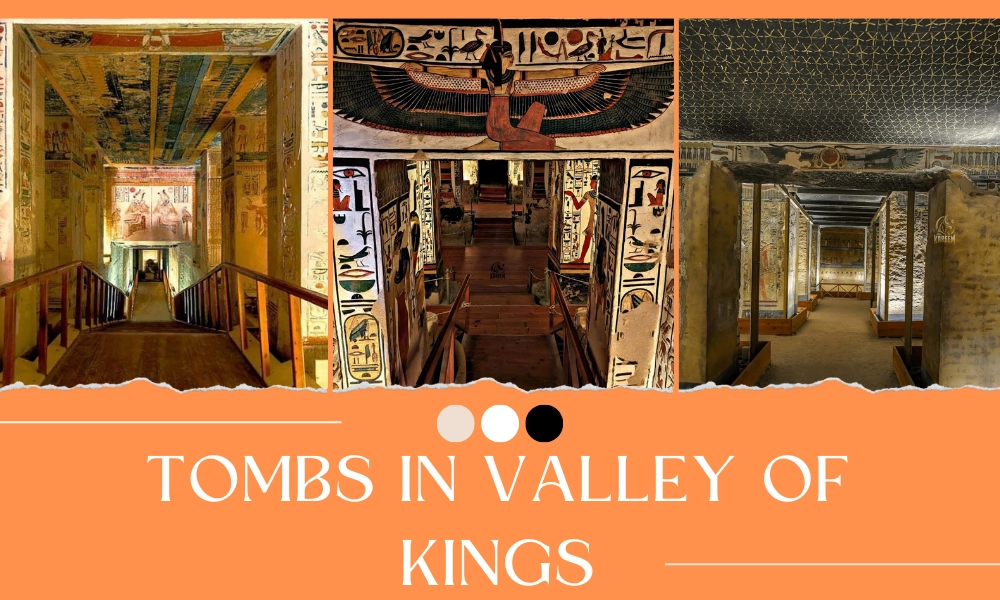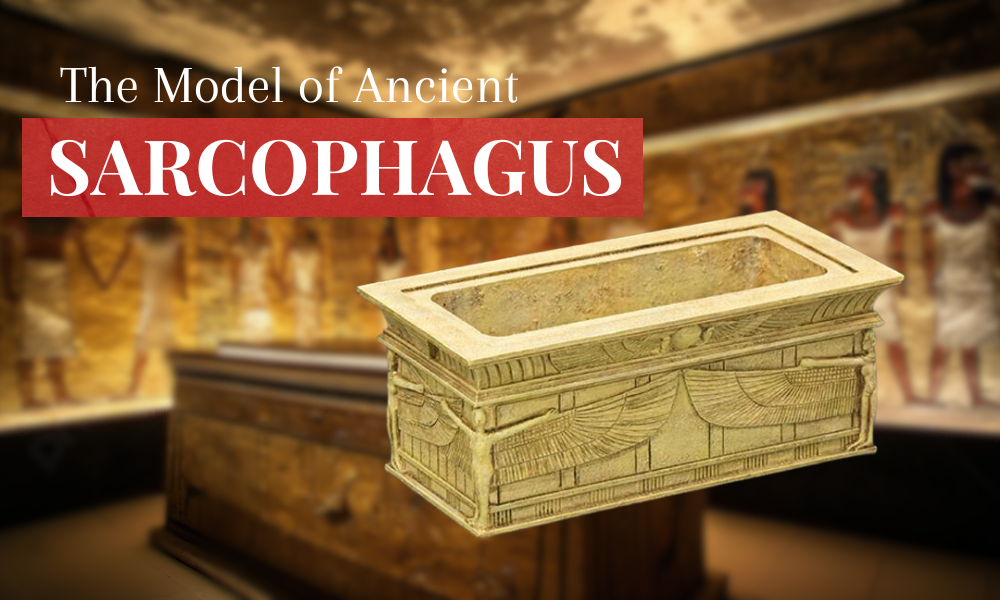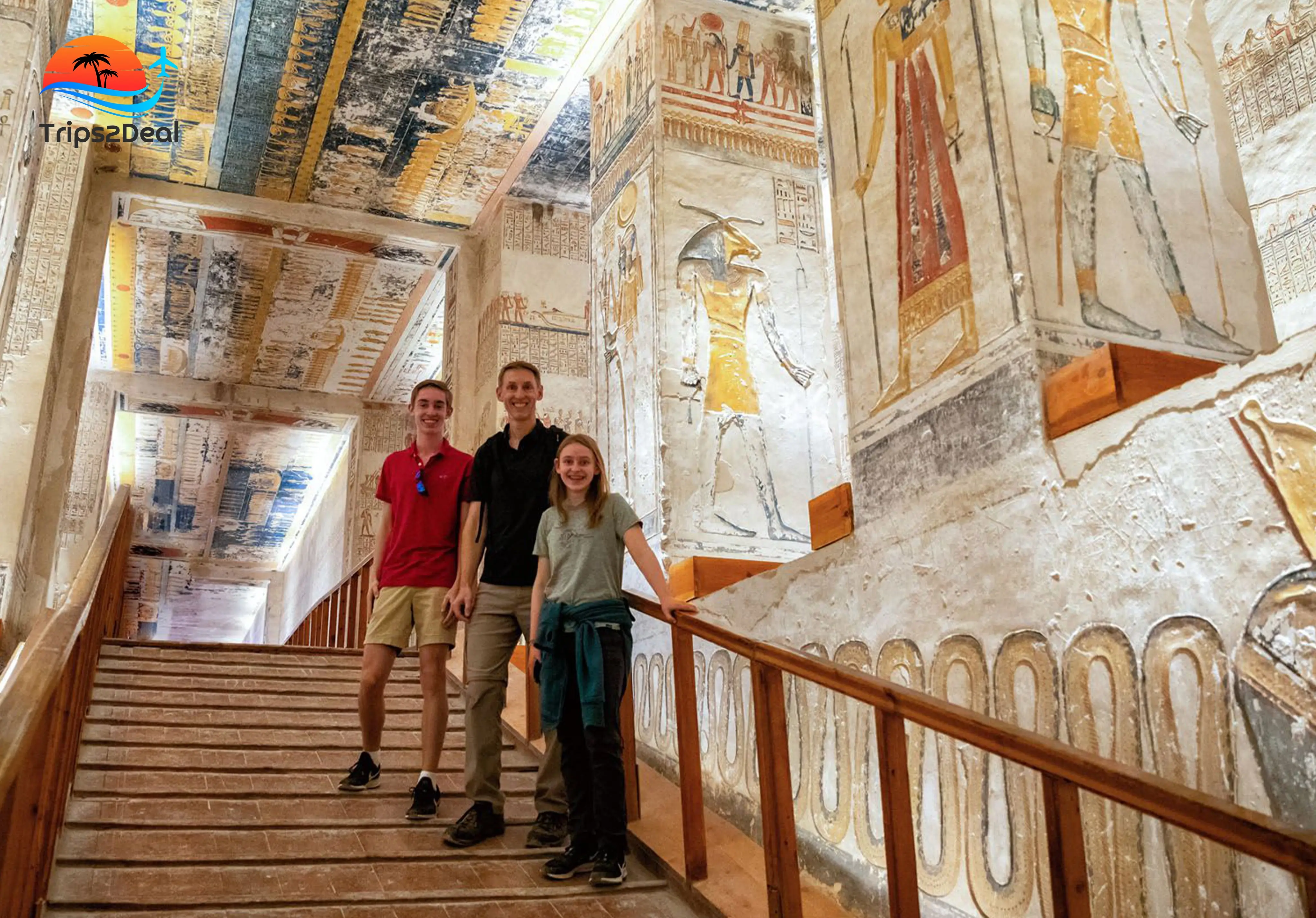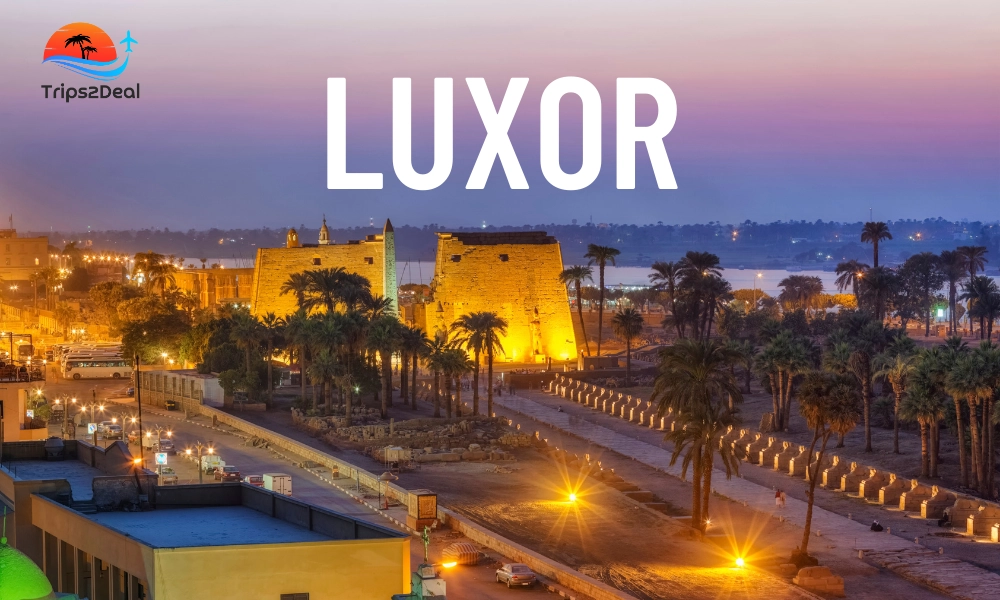Blogs

Valley of Kings
The burial ground which served as a resting place for the pharaohs, royal members and officials of ancient Egypt. Valley of Kings, an iconic archaeological site, with more than 60 tombs has been discovered and is in the process yet. This burial site has the tombs of pharaohs of the New Kingdom (c. 1539–1075 BCE). In this guide you will explore the history, architecture, famous tombs and facts about the valley of kings.
Table of Contents
History of Valley of Kings
In early pharaohs were buried inside the pyramids but the rulers of the 18th dynasty chose this site for burial as pyramids become vulnerable to tomb robbers. Valley of kings seems to them more securely hidden within the Theban hills. There is a pyramidal view of the highest point of the hill which can be seen during entrance. Many archaeologists considered it a reason for choosing this valley for the tombs. As, this location is in the Thebes / Luxor that were the capital of Egypt in ancient times.
This site was used as a burial chamber or site for almost 500 years from 18th to 20th dynasty. In this time the designs and construction of tombs has evolved from simple to decorated tombs. Eventually this site also became accessible for tomb robbers and they robbed almost all tombs with rarely few left. This archaeological site is divided into east or west parts that contain royal tombs. This valley was abandoned at the end of the new kingdom due to which its tombs became affected and disappeared. Later on in modern days the valley of kings was discovered by archaeologist Howard Carter in 1922.
This valley was not only the burial site for the Egyptian but also passage for the pharaohs for the afterlife journey. The decoration and religious iconography along prayers on walls shows their religious beliefs. Nowadays, using advanced technology or 3D scannings helps explorers to understand the architecture of tombs which leads to more discoveries. Government also regulates laws to specify the number of visitors for preventing the interiors of tombs.
5 Most Famous Tombs of Valley of Kings
There are more than 60 tombs are discovered yet and some famous of them are:
-
Tutankhamun’s Tomb (KV62)
This tomb was the most famous because it remained untouched and protected from robbers. A large number of wealthy artifacts along with a golden mask of pharaoh was found in it. First discovered by Howard Carter in 1992. It consists of four chambers that are relatively small among the other royal tombs. This is considered small due to the unexpected death of the pharaoh at a young age but others think that there are still more chambers that need to be discovered.
-
Ramses II (KV7)
This tomb was damaged by robbers and flood but its decoration shows the splendor of the pharaoh. Ramses II is considered as the most powerful and longest-reigning pharaoh in ancient Egypt history. There were extensive corridors that seemed to narrate the divine afterlife journey of the pharaoh.
-
Seti I (KV17)
This tomb was considered one of the beautifully decorated ones due to its intricate carvings and paintings that show the afterlife journey. His tomb is 446 feet long and deepest one among the other, discovered in 1817 by Giovanni Battista Belzoni. He was a pharaoh of the nineteenth dynasty and second king. This tomb was the first tomb that was discovered in the 19th century.
-
Hatshepsut’s Tomb (KV20)
The tomb of the famous female pharaoh which was partially discovered in the years of 1902, 1903, 1916 and 1920. She was a royal wife of Thutmes II and her tomb shows the unique design. She also had a mortuary temple as well by the name of Hatshepsut temple.
-
Tomb of the Sons of Ramses II (KV5)
This tomb is considered as the housed tomb of at least 50 sons of Ramses II. This tomb was discovered in 1995 by Kent R. Weeks and has 120 chambers which made it the largest tomb among the others.
-
Tomb of the Ay (KV23)
This tomb is situated in the west valley of the kings, Ay was a successor of Tutankhamun. Some experts believe that the pharaoh Ay took the original resting place of King Tutankhamun. There are hunting paintings on walls that make this tomb different from the others. There were three chambers in the tomb, an entrance staircase, and a pair of sloppin corridors as well.

Layout of Tombs in Valley of Kings
The layout has simple corridors in the starting of the new kingdom but later on the layout evolved into complex architecture of chambers. Every tomb has a descending passage to reach the chambers. There was a burial chamber along the sarcophagus and many other chambers with funerary goods. The walls of the tombs were decorated with paintings and religious text including the book of the dead.

Interesting facts about valley of Kings
Here are some fascinating facts about the valley:
- There is representation of astronomical star charts on ceilings of some tombs.
- The deepest tomb in the valley is the tomb of Seti I.
- There are still hidden chambers that are not discovered yet in some tombs and archaeologist still trying to discover them through modern scanning technology.
Art, Inscriptions, and Hieroglyphs
Almost all tombs in the valley are decorated very well by paintings that show the afterlife journey. There were the Hieroglyphic inscriptions on walls including the spells from the different books mainly from Book of Dead. These spells or signs are considered as a guide for the soul of the pharaohs. The hectic dry climate of the desert keeps the colour of the paintings still vibrant.
How to visit Valley of Kings:
The valley is easily accessible from the city Luxor, you can use local taxi Uber or there are private car services as well to reach the valley. If you are not in Luxor then there are a bundle of tour companies that operate day trips to luxor valley of kings you can join them for an amazing experience.
The best time to visit is during the months of October to April due to cooler climate in these months. Otherwise, you will experience extreme hot weather there and to avoid this you can visit in morning or evening times.
Helping Tips:
- Photography is restricted in some tombs as well.
- There is a ticket office on site where you can buy general tickets but you have to buy separate tickets as well if you want to visit premium tombs like Seti I and Tutankhamun.
- Wearing comfortable shoes, sunglasses and a hat or umbrella will enhance your experience.
- To avoid crowds you can visit in the early morning and hire a registered tour guide for the best experience.
- Also, keep Egyptian currency with you for tickets and other expenses.
- Alway be aware of scammers, who are probably offering your tour guide service but they are not official ones.
Nearby Famous Attractions:
After exploring valley of kings, you can also visit to some nearby attractions as well:
- Temple of Hatshepsut mortuary female pharaoh temple which is almost 5 km away from the valley and easily accessible by taxi.
- Colossi of Memnon, a pair of massive statues of Amenhotep III that are also called singing statues. This site is 7 km away from the valley which will take 12 minutes of ride.
- The valley of Queen which is 7.5 km away from the valley and easily accessible.
- Karnak Temple will enhance your historical experience which is 12 km away and a 20 min ride from the valley of kings.
- Luxor Temple is alongside the karnak temple after a walk of 2 km through sphinx avenue.
Conclusion
The valley of kings is the significant archaeological site in modern days due to its rich human history. It still attracts archeologists from all over the world to explore and discover more hidden gems in the valley. Its rich history made it worth visiting for tourists.






